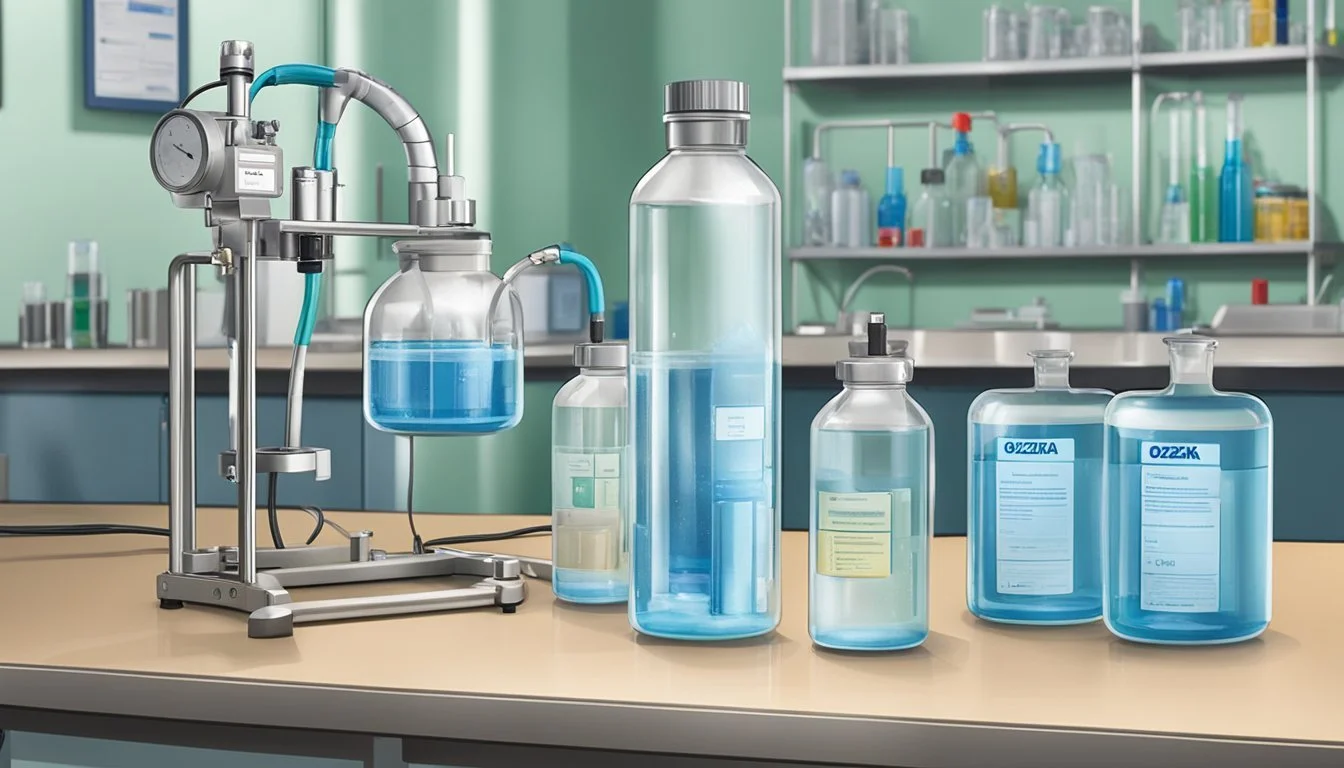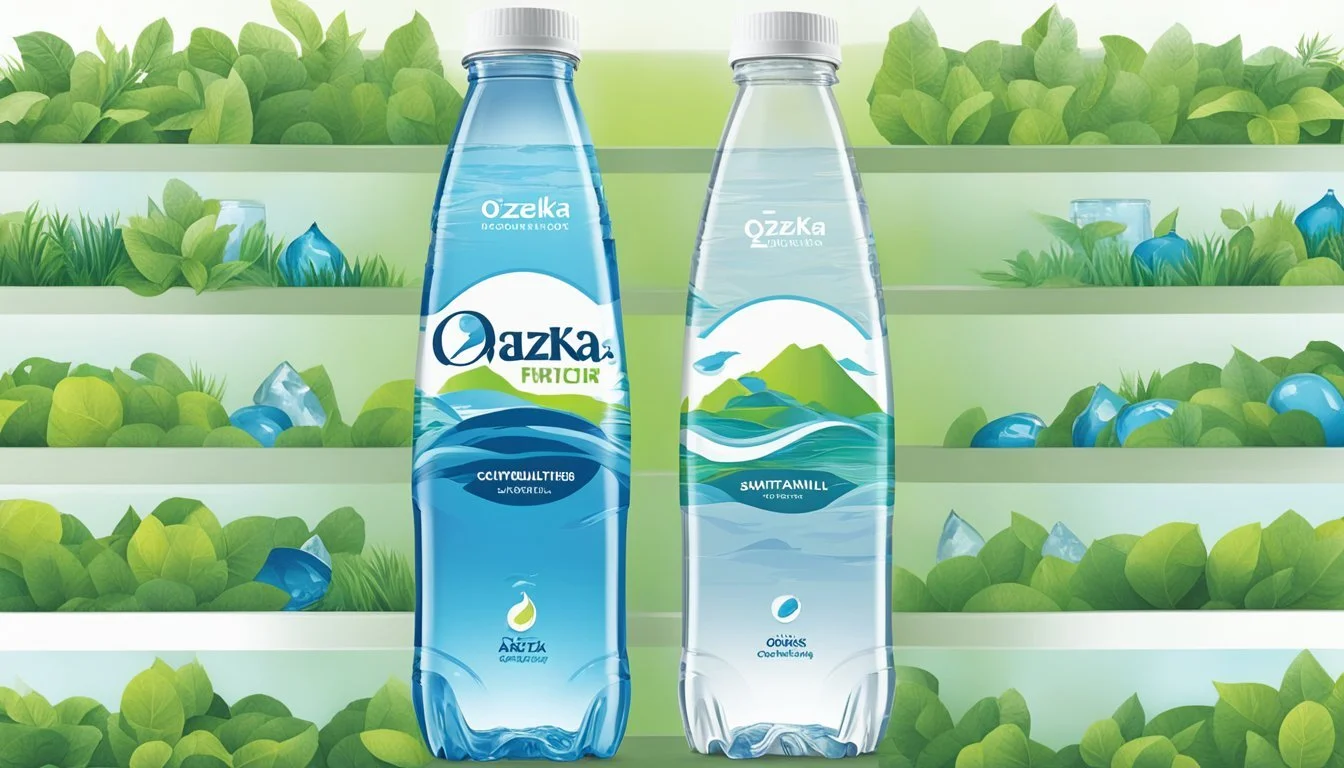Ozarka vs. Action
Ultimate Comparison of Bottled Water
Choosing the right bottled water can be challenging with so many brands vying for attention. Ozarka, known for its natural spring sources in Texas, often appeals to consumers looking for a more local option. On the other hand, Action water, a less-known but rising player, claims to offer purity and a crisp taste, making it a strong contender.
While Ozarka benefits from its century-old heritage and consistent quality, Action’s emphasis on modern filtration techniques and no added chemicals might sway health-conscious consumers. In a direct taste and quality comparison, the preferences might boil down to whether one values traditional sourcing or contemporary processing.
For those seeking reliable hydration, both brands present compelling choices, but your decision might hinge on personal taste and the importance of brand history versus innovation. Navigating between the established reliability of Ozarka and the fresh approach of Action can lead to a better-informed choice for your hydration needs.
The Essence of Bottled Water
Bottled water brands often highlight their unique attributes, focusing on health benefits, mineral composition, and optimal pH levels. These factors play a crucial role in determining the quality and appeal of the water.
Health Implications and Benefits
Health consciousness drives many individuals to choose bottled water. It's crucial to select brands that offer pure and safe hydration. Some bottled water options are fortified with essential minerals, which can contribute to better physical health.
For example, calcium supports bone strength, while magnesium aids in nerve function. Sodium levels also matter; too much can be harmful. Consumers prefer water free from contaminants, ensuring it is sourced from natural or well-regulated springs.
Understanding Mineral Content
Mineral content can vary significantly between bottled water brands. Minerals such as calcium, magnesium, and potassium can enhance the taste and offer health benefits.
A table illustrating common minerals found in bottled water:
Mineral Benefits Calcium Strengthens bones and teeth Magnesium Supports muscle and nerve function Potassium Helps maintain proper electrolyte balance
Brands like Ozarka source water locally, ensuring a consistent mineral profile. Evaluating the mineral content helps consumers make informed decisions.
The Significance of pH Levels
The pH level of bottled water influences its taste and health effects. Water with a neutral pH (around 7.0) is generally preferred as it is neither too acidic nor too alkaline. Ozarka's pH level aligns closely with this neutral value, which many find desirable.
In contrast, some brands feature higher pH levels, around 8.0, purportedly offering alkaline benefits. While there is some debate on these health claims, a slightly alkaline pH can be appealing for those looking to offset dietary acids. Ensuring the pH balance is suitable for daily consumption is key.
Analyzing Ozarka and Action Bottled Water
Ozarka and Action both offer unique qualities and features in their bottled water. Their sources, purification methods, and taste all contribute to their standing in the market.
Ozarka's Water Source and Purity
Ozarka sources its water from natural springs across Texas. The brand focuses on providing water that is naturally filtered through rock layers, ensuring a high level of purity.
Ozarka Spring Water is known for its rigorous testing to maintain high safety and quality standards. Their spring water typically contains essential minerals that contribute to its clean taste.
Key Points:
Source: Natural springs in Texas
Purification: Natural rock filtration
Mineral Content: Essential minerals present
Action's Bottling Process and Mineral Composition
Action Bottled Water utilizes a multi-step filtration process to ensure optimal purity. This includes reverse osmosis, UV treatment, and additional mineral reinfusion to maintain a balanced taste.
Action meticulously controls the mineral composition in its water, typically maintaining a neutral pH balance. This process helps in removing impurities while preserving beneficial minerals like calcium and magnesium.
Key Points:
Filtration Process: Multi-step (reverse osmosis, UV treatment)
Mineral Composition: Controlled reinfusion process
pH Balance: Neutral
Comparative Taste Profile
The taste profile of Ozarka is often described as clean and slightly mineral-rich, due to the presence of natural minerals from the spring sources. Consumers appreciate its refreshing and crisp flavor.
Action, on the other hand, provides a balanced taste with a neutral pH, making it ideal for consumers who prefer a less mineralized flavor. The rigorous filtration ensures minimal impurities, contributing to a smooth and consistent taste.
Key Points:
Ozarka Taste: Clean, slightly mineral-rich
Action Taste: Balanced, less mineralized
Consumer Preference: Varies based on mineral content and filtration
Scientific and Regulatory Standards
Both Ozarka and Action must comply with rigorous scientific and regulatory standards to ensure the safety and purity of their bottled water. Key areas of focus include adherence to safety standards and the management of potential contaminants, such as lead and PFAS chemicals.
Compliance with Safety Standards
Bottled water safety standards are established and enforced by agencies such as the FDA in the United States.
Ozarka, being a local brand in Texas, adheres to these FDA requirements, ensuring contaminants do not exceed permissible levels. Action, distributed more widely, also complies with these regulatory guidelines, adhering to specific safety criteria based on region.
Both brands undergo regular testing for contaminants, pH levels, and overall purity to meet the necessary standards. Maintaining transparency in test results is crucial, providing consumers with confidence in the safety and quality of the water they consume.
Confronting Contaminants: Lead, PFAS, and More
Contaminant management is critical for bottled water brands. Lead and PFAS (Per- and polyfluoroalkyl substances) are primary concerns due to their potential health impacts. Ozarka and Action perform stringent testing to ensure levels remain below harmful thresholds.
Lead contamination, often a concern from old piping systems, is meticulously monitored. Meanwhile, PFAS chemicals, known for their persistence and potential health risks, are harder to eliminate. Both brands must ensure these chemicals are kept at safe levels to protect consumer health.
Contaminants like arsenic and other heavy metals are also routinely checked. Ensuring these substances remain below hazardous limits is essential for maintaining bottled water safety and consumer trust.
Environmental and Ethical Considerations
Evaluating Ozarka and Action for their environmental and ethical footprint involves understanding their practices around plastic usage, sustainability efforts, and their role in promoting eco-friendly packaging.
Assessing the Environmental Impact
Assessing the environmental impact of bottled water primarily involves looking at plastic bottle usage and waste management.
Ozarka, like many other brands, uses plastic bottles, which can contribute significantly to environmental waste if not properly recycled. The long-term degradation of plastic bottles is an issue since they can persist in the environment for hundreds of years, posing risks to wildlife and ecosystems.
By contrast, Action emphasizes the use of recycled materials in their packaging. They make efforts to reduce plastic waste by incorporating a higher percentage of recycled PET (rPET) in their bottles. This practice helps lower the demand for new plastic production and reduces the overall carbon footprint associated with the manufacturing process.
Efforts to manage plastic waste through recycling programs and encouraging consumers to recycle are essential for both brands. Investing in infrastructure that supports comprehensive recycling can significantly mitigate their environmental impact.
The Role of Companies in Sustainability
Companies play a critical role in promoting sustainability through their business practices and community initiatives.
Ozarka has implemented various sustainability efforts, including the promotion of bottle recycling and reduced plastic usage. They have partnered with environmental organizations to support various conservation projects. However, their primary packaging remains heavily focused on single-use plastic bottles, raising concerns about their long-term commitment to reducing plastic waste.
Action goes a step further by exploring eco-friendly alternatives to traditional plastic bottles. They use innovative packaging solutions such as bio-based plastics and have a strong emphasis on sustainability in their branding. Their sustainability efforts also include supporting clean water initiatives and reducing their overall environmental footprint.
Both companies can improve their sustainability by continually innovating and investing in greener technologies, thus helping to pave the way for a more sustainable industry.
Consumer Orientation and Market Presence
Understanding how Ozarka and Action position themselves in the market and cater to diverse consumer preferences is key. Examining brand recognition and regional preferences provides insight into each brand's reach and influence.
The Power of Brand Recognition
Ozarka is a well-known brand, especially in parts of the United States like Texas, where its water is sourced. This local connection enhances Ozarka's appeal in these regions, building trust and brand loyalty.
Action Water, while a newer entrant, has quickly gained a following due to its emphasis on purified water and innovative marketing strategies. This brand leverages social media and eco-friendly initiatives to attract environmentally conscious consumers, widening its market presence.
Water Preferences Across States and Cultures
In Texas and surrounding states, consumers tend to favor Ozarka for its locally-sourced, natural spring water. This aligns with regional pride and a preference for natural products.
Conversely, Action Water appeals to urban consumers across various states who prioritize purified water and environmental sustainability. These consumers are often drawn to Action's transparent sourcing and filtration methods.
The distinct preferences between natural spring water and purified water underline the importance of understanding regional and cultural influences in bottled water choices.
Innovation in Packaging and Delivery
Ozarka and Action are innovating in packaging and delivery to improve sustainability and customer convenience. Both brands are incorporating more eco-friendly materials and adapting their delivery methods.
The Rise of Recycled and Alternative Packaging
Ozarka and Action are actively exploring the use of recycled plastics to reduce their environmental impact. Ozarka has been incorporating recycled plastic (rPET) in their bottles, moving towards a more sustainable production process.
Action is taking steps further by experimenting with eco-friendly alternatives like boxed water and aluminum cans, which have higher recycling rates. Boxed water, composed mainly of paper, is an innovation that reduces reliance on plastic and appeals to environmentally conscious consumers.
Convenience and Accessibility
Both brands focus on providing convenience and accessibility to ensure customer satisfaction. Ozarka uses Blutriton technology to improve the durability and portability of their bottles, making them more suitable for on-the-go use.
Action has optimized their delivery methods to cater to modern consumer demands, ensuring that their products are widely available through various channels. This includes offering smaller pack sizes and subscription services, making it easier for customers to access their preferred water options. Lightweight packaging and compact designs also play a crucial role in enhancing convenience for daily use.
Bottled Water in Comparison with Alternatives
When deciding between bottled water and other water sources, it’s important to consider factors like taste, purity, and health benefits. Each type of water has distinct characteristics that cater to different needs and preferences.
Spring Water vs Tap Water
Spring water, also known as natural spring water, is sourced directly from a natural spring. It often contains various minerals and is known for its refreshing taste. The water is usually bottled at the source and undergoes minimal processing to retain its natural properties.
Tap water, on the other hand, is municipally supplied water that has been treated to meet safety standards. It typically undergoes multiple filtration and disinfection steps to ensure it is safe for drinking.
While tap water is more affordable and accessible, some people prefer the taste and mineral content of spring water. Another point to consider is that tap water can sometimes contain trace amounts of chemicals used in the treatment process, although usually within safe limits.
Mineral Water vs Purified Water
Mineral water is characterized by its content of various minerals such as calcium, magnesium, and potassium, which are often naturally occurring from its underground source. These minerals can provide health benefits and contribute to the water’s distinct taste.
On the contrary, purified water is water that has been mechanically filtered or processed to remove impurities and contaminants. Common methods include reverse osmosis and distillation. This process ensures that purified water is free from contaminants but also removes natural minerals that might be beneficial.
While some prefer mineral water for its taste and nutritional benefits, others may opt for purified water due to its high level of purity and safety from contaminants. Each type serves specific needs, and personal preference often guides the choice between them.
More About Ozarka
Mountain Valley Spring Water vs Ozarka: Which Bottled Water is Better?
Ozarka vs Kirkland Signature: Which Bottled Water is Better?
Ozarka vs Richard's Rainwater: Which Bottled Water is Better?
Ozarka vs Whole Foods Italian Still Mineral water: Which Bottled Water is Better?







